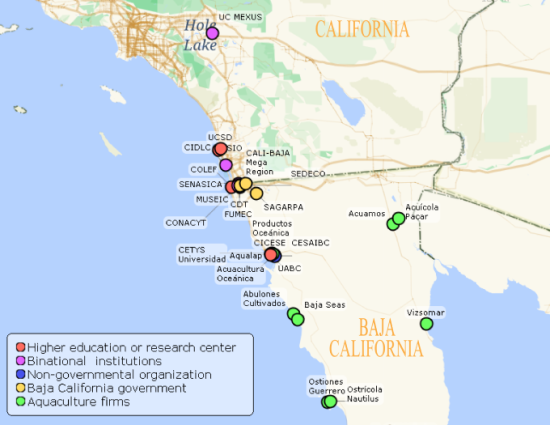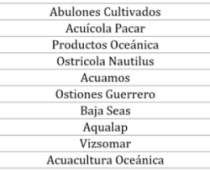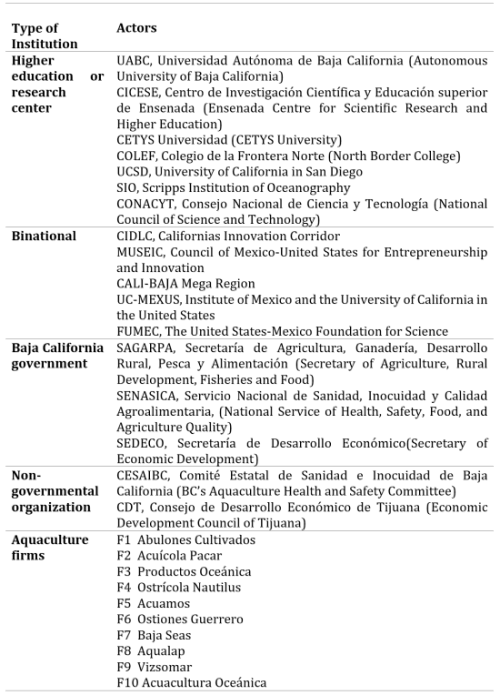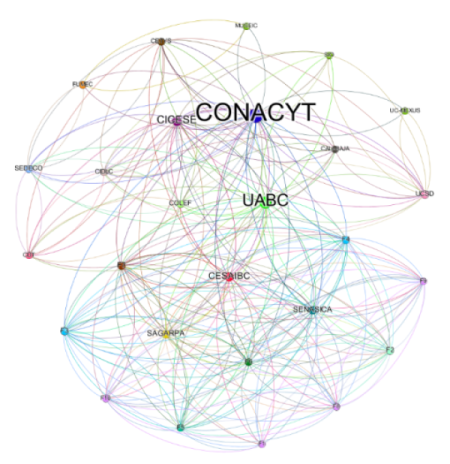Introduction
Multi-actor network analysis has become an integral element in innovation ecosystem research. This perspective analyzes the dynamic behavioral relationships among actors with different attributes, beliefs, and decision-making mechanisms, such as entrepreneurs, private investors, government officials, policymakers, and a variety of non-business actors. The main purpose of this approach is to study the change mechanisms and find patterns of emergence and extinction (Tsujimoto et al., 2018). What characterizes an innovation ecosystem is the central role of the learning process, the importance of its historical trajectory, the influence of institutions in and on the ecosystem, and the diverse and multiple relationships the ecosystem fosters between technological, organizational, and scientific innovations. These “ecosystems” are therefore seen as the result of complex behavior between numerous heterogeneous actors. What governs these complex systems are the behavioral mechanisms and interactions that lead the alignment of resources, activities, and efforts in innovative directions (Valkokari, 2015; Muller, Héraud, & Zenker, 2017). To understand a complex system thus implies understanding the behavior of each component of the system (Miller & Page, 2007).
Viitanen (2016) insists that innovation ecosystem research should focus on studying the key factors and success elements for their effective management, in other words, to identify local strengths of an ecosystem. A significant local contributor is a local stakeholder or actor that circulates information and resources among the network, and who is a key element and success factor promoting and establishing communication amid pairs of actors. The development of innovation ecosystems has contributed to regional revitalization because this model brings together key actors that perform important technology-driven development processes. What guides the ecosystem is the particular combination of public sector interests as they align with private sector business-oriented needs and actions.
CaliBaja’s binational innovation ecosystem relates to Baja California (Mexico), and the state of California (USA). This mega-region is distinguished internationally as intensive in both innovation and entrepreneurship initiatives. Other elements, such as a population of 7.7 million people, a territory of more than 35 thousand square miles, a gross domestic product of 255.2 billion USD, a workforce of 3.4 million people, and a territory rich in ocean and land biodiversity, contribute to its distinctiveness. As a result, CaliBaja is a land of opportunity for global businesses operating in sectors like renewable energy, agribusiness, aerospace technology, medical devices manufacturing, international trade, and logistics (CaliBaja, 2019).
The present study focuses on aquaculture firms from the agribusiness sector of Baja California. Aquaculture has been catalogued as one of the local economic sectors with high expectations for growth and high demand for innovation processes (GOBBC, 2015). Furthermore, responsible practice in aquaculture will add to the prudent management of oceans. This is a key characteristic of a sustainable future that contributes to ocean conservation, as well as food security and nutrition (UN, 2019). Aquaculture is the farming of aquatic organisms involving biotechnological interventions in the rearing process to enhance production. It is probably the fastest growing food-producing sector in the world and accounts for 50% of the world´s fish for human consumption (FAO, 2019).
Map 1. CaliBaja -binational innovation ecosystem stakeholders
The last 30 years of development in biotechnology practices among regional research institutions in Baja California (BC) has led to the emergence of a group of 64 aquaculture firms, whose characteristics match up with a common profile that biotechnology companies have worldwide. These are small and medium-sized companies with a well-qualified workforce, which have developed in a knowledge-intensive environment (Perez, et al., 2016). BC´s aquaculture production grew nearly seven times between 2000 and 2015, from 1,677 to 10,707 tons, and its economic value rose from 2 to 39 million dollars in the same period (CONAPESCA, 2015). Due to its wealth in biological diversity, BC is at the top of the national Mexican ranking with strong growth expectations in the production of marine species (GOBBC, 2015).
Assuming that to identify significant local contributors, innovation ecosystem research should focus on studying key factors and success elements for their effective management (Viitanen, 2016), we use social network analysis methodology to focus not only on the actors themselves, but especially on the connectivity and relationships among them. By studying the network and its interactions, we can understand its multiple relationships as well as identify key nodes or local significant contributors. The purpose of this study is to identify significant local contributors among CaliBaja’s binational innovation ecosystem. First, we map ecosystem actors by studying their historical processes of emergence and growth. The ecosystem’s network in our study is composed of 27 actors with different attributes. Second, using social network analysis, we identified significant local contributors by studying multiple relationships based on information and resource sharing among actors (Luna & Velasco, 2017). As a result of our examination, local contributors in one CaliBaja domain (aquaculture) were able to help other ecosystem actors to catalyze their cross-border competitiveness and collaborative initiatives that value territorial proximity, which is essential for an innovation ecosystem.
Method
This section describes the methodology. The data was gathered in two phases. The first phase is actor mapping.
Actor mapping explores the relationships and connections among actors, as well as their relationships regarding a certain issue. The purpose of actor mapping is also valuable to identify opportunities for improving the system’s overall performance. Four actor categories were established: 1. Binational research agencies and higher education institutions, 2. Baja California public entities (government-run), 3. Non-government actors, and 4. Aquaculture firms.
We used data gathered from official websites and online documents of bi-national institutions and BC´s public and private entities, to map the relationships every time two network actors participated on joint projects, shared information, attended a meeting, or coincided at a physical or virtual space. With this collected data, we constructed an adjacency matrix.
In the second phase, an electronic survey was designed and sent to 64 firms registered in the directory of BC´s State Aquaculture Health and Safety Committee. A sample of aquaculture firms was determined and ten firms participated in answering the survey, all of which did so on-time (Perez, 2016), see Table 1. The data collection from firms nevertheless depended on the willingness of individuals to participate in the survey. Besides gathering demographic information, the survey was designed to establish relationships among ecosystem stakeholders and between ventures following the same criteria described above, and captured on the adjacency matrix.
Table 1. Aquaculture firms that participated in the survey
Social Network Analysis (SNA) is a tool that allows the understanding of interactions between actors and how these relations derive the flow of information, resources, and influences within the network structure (Salancik, 1995). In other words, it allows the quantification and visualization of the system seen as a network of actors with collective achievements and personal interests (Daly & Finnigan, 2009). This tool involves four defining properties. First is the importance of structural intuition base on ties linking social actors . Second, actors are linked based on the collection and analysis of data regarding social relations. Third, graphic imagery is used to reveal and display link patterns. And, finally, patterns are drawn that describe and explain mathematical and computational models (Freeman, 2004).
With these properties in mind, SNA consists of nodes and ties. Nodes can represent a firm, a government or a non-government institution. Ties are lines connecting the nodes, representing a relationship between the various ecosystem players. The relationships can be knowledge transfer, joint projects or sharing physical and virtual spaces. In addition, SNA is relevant for multi-actor network analysis because it emphasizes the identification of multiple actors and their relationships, in order to explore how such relationships among actors affect dual efforts that attempt to change a given situation. Specifically, the relationships established among actors are studied, rather than the actors themselves. With this vision, Gephi's open-source network analysis and visualization software was used. This tool allows the observation of network attributes, such as the degree of centrality, intersection or betweenness.
Significant local contributors were on this basis identified in two categories. First by actor, using the degree of centrality attribute, which is defined as the capacity or ability of an actor to reach all other nodes in the network. Second, among the entire network using the betweenness attribute, which focuses on communication control and provision, as well as, information about the possibility of a node or actor to mediate communication within pairs of nodes. In other words, a key factor and success element.
Results
We start this section by describing historical developments, as well as network mapping of the CaliBaja region.
Bi-national, Research and Higher Education Actors
This section presents a historical overview of local efforts in BC regarding the development of science and technology capabilities, specifically in the aquaculture sector. We also briefly describe efforts in the bi-national context to strengthen innovation, science, and technology in the region. All these efforts are supported by national, local, and bi-national regulatory frameworks that contribute gradually to build up CaliBaja’s binational innovation ecosystem.
To overcome social, economic, innovation, and political asymmetries, combined bi-national institutional efforts have been carried out in the CaliBaja mega-region to pursue economic development through strengthening innovation, science, and technology initiatives, especially in the area of education and specialized human resources training (Celaya & Almaraz, 2018).
In 1960, the Autonomous University of Baja California (UABC), created two institutions simultaneously in the city of Ensenada, the Institute of Oceanography and Ichthyology, later Institute of Oceanology Research (IIO), and the School of Marine Sciences. Their mission was to promote and carry out scientific research focussed on solving regional and national problems. Since its inception, the School of Marine Sciences had the valuable support of several researchers from California institutions, such as the Scripps Institution of Oceanography (SIO) in La Jolla California. In 1984, the School of Marine Sciences started research activities, and a year later the Master's program in Biological Oceanography was created.
During this time, academic agreements with the Center for Scientific Research and Higher Education of Ensenada (CICESE) were established (UABC, 2019). Particularly relevant for the study of BC’s biodiversity in 1968, CICESE was established, as a result of formal collaboration among academics of the School of Marine Sciences of UABC, and SIO of the University of California San Diego (UCSD), an idea that materialized in 1973 through the Mexican National Council of Science and Technology (CONACYT) (CICESE, 2013). Currently, CICESE is a public research centre; the largest of the 27 CONACYT has nationwide.
With the objective of strengthening the relationship and collaboration between the University of California and Mexican academic institutions, the University of California Institute for Mexico and the United States (UC MEXUS) was created in 1980. UC MEXUS is an academic agency dedicated to encourage, promote, safeguard, and contribute to bi-national research, in order to develop collaboration and academic exchange programs. Its main objective is to improve bi-national scientific knowledge.
In 1997, CONACYT and UCSD signed the UC-CONACYT agreement on Cooperation in Higher Education and Research. Up to the present time this program has provided funding and support for graduate students who have collaborated on numerous research projects, becoming the most important, collaborative, and fruitful program of Mexico with any university abroad. This agreement is managed by UC MEXUS and represents a long-term commitment to building cultural bridges and strengthening the bi-national academic community to influence issues of common concern to both countries. Its fundamental principle is that in bi-national collaboration research all participants must share equally in training. Over the past two decades, UC MEXUS and CONACYT have initiated a series of highly successful programs that provide opportunities for collaborative research, academic exchanges, and student development (UC MEXUS, 2019).
The United States-Mexico Foundation for Science (FUMEC) is a non-profit bi-national organization created in 1993 under the tri-national North American Free Trade Agreement (NAFTA). Its objective is to promote bi-national collaboration in science and technology, to contribute to the solution of problems of common interest. FUMEC promotes best practices in three areas: 1) economic development based on innovation, 2) human resources training in science, and 3) technology, environment and health.
FUMEC has launched several programs to generate innovation processes. From their perspective, these programs are the key to achieving economic growth and success with countries and regions in global markets. Like TechBa, in conjunction with the Mexican Ministry of Economy, this program aims to facilitate the access of Mexican technology companies to dynamic business systems worldwide. TechPYME is also an enterprise program for accelerating and strengthening regional systems, which supports the migration of small and medium businesses to strategic niches. In 2013, the Council of Mexico-United States for Entrepreneurship and Innovation (MUSEIC) was created as a way to give priority to economic development through activities linked to entrepreneurship. In contrast, FUMEC´s scope of action is national, with the responsibility of managing Mexican border actors’ activities in search of industrial, scientific, and technological development. In 2013, with support from CONACYT, FUMEC was the general coordinator of a project on State Agendas of Innovation (FUMEC, 2019).
One of the most recent efforts began in 2005, with the Trans-Border Initiative for Competitiveness and Innovation at the San Diego Dialogue UCSD program. This was started in collaboration with CENTRIS, a BC high technology incubator, CICESE, and the City of Chula Vista, California, among others, which together published the report Borderless Innovation (San Diego Dialogue, 2005). This report mentions three key aspects to catalyze cross-border competitiveness. First, the need to implement collaborative initiatives to raise awareness of regional high value-added clusters with special attention to biotechnology and high technology industries that value the physical proximity of institutions for building up an innovation system from the research and development stage to the manufacturing and distribution stage. Second, to ensure growth and competitiveness, it is of vital importance to bring together leaders on both sides of the border who will collaborate to significantly increase professional and workforce training programs and technical assistance. Also, innovative social institutions and mechanisms are required to propel the cross-border region from words into action. This will involve shared leadership, as well as co-investment and coordination of programs aimed at strengthening the capacity and competitiveness of the bi-national region (San Diego Dialogue, 2005: 5).
The above effort lead to the creation of the Innovation Corridor of the Californias, an organization that groups associations, companies, institutions, and government entities who collaborate in areas of opportunity at the border from a technological standpoint. Some of these actors are the Biotechnology Council of Ensenada, California Institute for Telecommunications and Information Technology (Cal-IT2), BC´s National Chamber of the Electronics Industry, Telecommunications and Information Technologies (CANIETI), Economic Development Council of Tijuana (CDT), CENTRIS, CETYS University, CICESE, Colegio de la Frontera Norte (COLEF), CONNECT a San Diego organization that promotes entrepreneurship, Tijuana Economic and Industrial Development (DEITAC), Institute of the Americas, International Community Foundation, UCSD's Jacobs School of Engineering, San Diego Dialogue, Scripps Institution of Oceanography, San Diego State University (SDSU), BC´s Secretary of Economic Development (SEDECO), Baja California Information Technology Cluster (IT@ Baja), USCD's Center of US-Mexican Studies, University of San Diego´s (USD) Transborder Institute, and UABC, among others (San Diego Dialogue, 2005: 47).
The bi-national long-term economic development initiative in the CaliBaja mega-region began in 2008 and is one of the most recent bi-national cooperation efforts. It was founded by the counties of San Diego and Imperial Valley in California and by the state of Baja California. Its objective is the cooperative development of strategies for global competitiveness. It brings together public and private efforts on both sides of the border to take advantage of business development in the bi-national region. In this context, UCSD formalized with three Baja California’s higher education institutions, UABC, COLEF, and CETYS a Memorandum of Understanding (MOU) agreement. Its objective is to strengthen and increase the collaboration ties and exchanges to generate bi-national research projects in technology innovation and entrepreneurship that enhance the cross-border region (CaliBaja, 2019).
Baja California public actors
The Secretary of Economic Development (SEDECO) is a government institution whose objectives are to achieve national leadership in growth indicators, such as economic development and quality of life, establish a sustainable business policy where innovation is a strategy for competitiveness, and promote an efficient regulatory framework for investment. Furthermore, to maintain BC´s third place in national competitiveness indexes, SEDECO created a system of training and development to guarantee the required skills in the state’s workforce. This involved a virtual network of educational institutions with undergraduate and graduate technical programs, linked for the development of human capital (SEDECO, 2019).
SENASICA is BC´s National Service of Health, Safety, Food, and Agriculture Quality in charge of prevention, diagnosis, and control of diseases in accordance with article 107 of the General Law of Sustainable Fisheries and Aquaculture. In coordination with the State Government through the State Fisheries and Aquaculture Secretariat (SAGARPA), SENASICA coordinates health programs and actions, as well as promoting good production practices in support of the aquaculture sector (SENASICA, 2019).
The National Commission of Aquaculture and Fisheries (CONAPESCA) is the federal institution responsible for managing, regulating, and promoting the sustainable use of the resources of the aquatic flora and fauna. The Secretary of Fisheries and Aquaculture (SEPESCA) is an agency of the Government of the State of Baja California, in charge of promoting fisheries and aquaculture for sustainable development, including activities such as strengthening social and private sectors, as well as linking scientific and technological progress with production. Other activities include the promotion of investment to generate jobs, and the profitability of fishermen and aquaculture practitioners of BC (SEPESCA, 2019).
Non-government actors
CESAIBC is BC’s Aquaculture Health and Safety Committee. It began operations in May 2006, in response to producers’ concerns pursuing promotion and strengthening aquaculture development in the state, where knowledge, continuous improvement, and implementation of good practices were fundamental for production and market access. The objective of the committee is to promote safe sanitary management practices in aquaculture to reduce and avoid conditions that favor the presence of pathogens and their dissemination (CESAIBC, 2019).
CDT is the Economic Development Council of Tijuana, and coordinates committees that represent educational, business, and social sectors. Its objective is to follow up on the projects of the Strategic Plan of Tijuana (CDT, 2019).
Aquaculture firms descriptions
According to the 2015 BC aquaculture firms’ survey results, these firms have been active for 10 to 25 years. The majority use biotechnology processes in their operations, about 30% of the personnel, directly involved in biotechnology activities, have masters or Ph.D. degrees, and 80% of these companies have developed innovation processes mainly with the aim of improving product quality. In recent years, 70% have been beneficiaries of government funds for the development of science and technology. Most of the firms agree that research, development, and technological innovation are the main factors that influence the development of innovation activities, and all of these enterprises have been involved in cooperative relationships with firms in the same field as theirs, especially for technology transfer (Perez, 2016).
In accordance with this paper’s conceptual approach, companies are agents in a multi-actor ecosystem that establishes, facilitates, and maintains multiple relationships through the circulation of information and resources.
Binational innovation ecosystem, multi-actor network
As discussed in the Introduction, a multi-actor network perspective analyzes the dynamic behavioral relationships among actors with different attributes, beliefs, and decision-making processes like entrepreneurs, private investors, government, policymakers, and a variety of non-business actors. For our study, 27 actors are part of the bi-national innovation ecosystem network, see Table 2.
Table 2. Bi-national Innovation Ecosystem Multi-Actor Network
The objective of this study has been to identify significant local contributors among CaliBaja’s binational innovation ecosystem. We took into consideration information and resources shared among actors to established dyadic relationships.
Degree of centrality is an SNA parameter defined as the capacity of an actor to reach all other nodes in the network. Considering this, we find that UABC, CESAIBC, SAGARPA, CICESE, and CONACYT exhibit the highest centrality degree; see Figure 1. The node size is related to this condition. This means that these nodes are near and collaborate with all other actors in the network. We argue that the higher number of nodes an actor interacts with, the greater its grade of centrality will be. The more central nodes, therefore, are in a position that may allow greater access to resources from different sources. Secondly, these actors can mediate with others and obtain benefits, or persuade them. However, this does not represent ‘power,’ rather only that the central node is in an advantageous network position (Ramírez, 2016). In terms of firm participation, we noted that Ostrícola Nautilus y Productos Oceánica in an advantageous position.
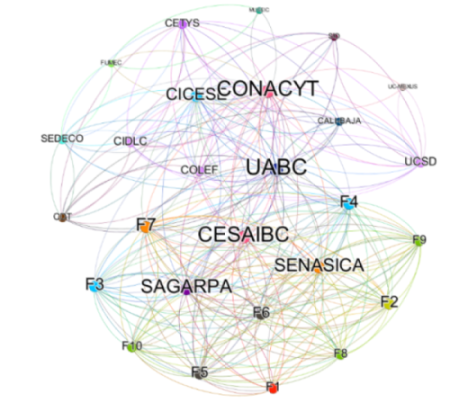
Figure 1. CaliBaja’s binational innovation ecosystem network: centrality degree
The importance of an actor in the network is related to its interconnection or betweenness; this SNA parameter focuses on communication control and defines the possibility that a node or actor has to mediate communication within pairs of nodes. For instance, it is possible for an actor to have a low centrality degree, not being popular, and to have connections with only two nodes. If at least one of these nodes connects with an endless number of actors or groups of actors, the connecting node has a high degree of network betweenness, that is, network actors will not connect unless they are linked with this highly connected actor. This intercession is based on local dependency, since the nodes that are in many routes that connect to several actors have a greater capacity of betweenness compared to those that do not. These nodes are also named “bridge nodes” (Ramírez, 2016).
In this regard, CONACYT is the actor with the highest degree of betweenness (see Figure 2). This means that many interconnections and communications with others in an ecosystem and among actors there depend on this particular and unique node. Hereby, this institution has become the bridge that facilitates interaction and builds interdependence between network stakeholders, as a trustworthy ‘bridging’ partner. Valkokari (2015) argues that intermediate actors build a platform for innovation ecosystems and connect the network with other actors. CONACYT is the most significant national contributor that provides local information and resources among CaliBaja’s binational innovation ecosystem.
Figure 2. CaliBaja’s binational innovation ecosystem network: betweenness
Conclusions
The multi-actor network perspective presented in this paper has the objective of contributing to the understanding of CaliBaja’s innovation ecosystem by using actor mapping and identifying significant local contributors. In this scenario, our analysis provides an information platform for entrepreneurs and decision makers regarding the management of binational information and resources. We believe CaliBaja’s binational innovation ecosystem has great potential to catalyze cross-border competitiveness and collaborative initiatives that value territorial proximity to institutions, which is essential for an innovation ecosystem.
UABC, CESAIBC, SAGARPA, CICESE, and CONACYT experience a high degree of centrality. This means that they influence all other actors in the network, and are key for connecting the aquaculture firms with the rest of the network actors. These institutions are in an advantageous position that allows them to access resources from different sources, mediate agreements and contracts with others, and eventually to persuade the less connected nodes to join in.
Furthermore, though CONACYT is a federal entity, we can identify it as a significant local contributor and bridge actor because it widely across Mexico distributes information and resources. CONACYT also promotes and establishes communications amid pairs of nodes in the national ecosystem. Moreover, we also noted that research and higher education institutions show greater capacities to reach multiple relationships. As well, universities have been catalysts for cross-border exchanges and joint projects. These capacities and the relationships themselves are what fundamentally describe the network paradigm, such that achievements in innovation and learning arise as these network relationships and the new opportunities they bring for collaboration and competition intensify.
We conclude that the level and quality of interactions among aquaculture firms must rise. Future research is therefore needed to study the dynamics of ecosystem networks in terms of alliances and cooperation, by taking into account other network parameters such as behavior, adaptation, interaction, and self-organization.
CICESE. 2013. CICESE los Primeros Cuarenta Años. Ensenada: CICESE.
Cook, P., & De Laurentis, C. 2010. Evolutionary economic geography: regional systems of innovation and high-tech clusters. In R. Boschma, & R. Martin, The Handbook of Evolutionary Economic Geography. Edward Elgar: 239-260.
Daly, A., & Finnigan, K. 2009. A Bridge between Worlds: Understanding Network Structure to Understand Change Strategy. Journal of Educational Change, 111 (2): 111-138. doi: 10.1007/s10833-009-9102-5
Duque, J. 2010. Biotecnología Panorámica de un Sector. Madrid: Netbiblo S.L.
Freeman, L. 2004. The development of social network analysys: a study in the sociology of science. Vancouver: Empirical Press.
Hill, C., & Jones, G. 2012. Essentials of Strategic Management (3rd ed.). Ohio: South-Western, Cengage Learing.
Luna, M., & Velasco, J. 2017. Complex Associative Systems: Cooperation amid Diversity. México: UNAM, Instituto de Investigaciones Sociales: Centro de Investigaciones Interdisciplinarias en Ciencias y Humanidades.
Metcalfe, S. 1998. Evolutionary Economics and Creative Destruction. New York: Routledge.
Miller, J., & Page, S. 2007. Complex Adaptive Systems. Princeton: Princeton University Press.
Muller, E., Héraud, J.-A., & Zenker, A. 2017. Are Innovation Systems Complex Systems? In P. Bourgine, P. Collet, & P. Parrend,
First Complex Systems Digital Campus World E-Conference 2015. Springer Proceedings in Complexity, Springer, Cham: 167-173.
https://doi.org/10.1007/978-3-319-45901-1_17OECD. 2018. Oslo Manual (4th Edition). Paris: Organization for Economic Cooperation and Development.
Perez, S. 2016. Tesis: Capacidades de vinculación de las bioempresas del sector acuícola de Baja California al ecosistema binacional de innovación. Tesis de doctorado no publicada, Universidad Autonóma de Baja California, Tijuana, Mexico.
Ramírez, E. 2016. Anáisis de redes sociales para el estudio de la gobernanza y las políticas publicas. Aproximaciones y casos. Cd. de Mexico: CIDE.
Salancik, G. 1995. Wanted: A Good Network Theory of Organization. Administrative Science Quarterly, 40: 345-349.
Tsujimoto, M., Kajikawa, Y., Tomita, J., & Matsumoto, Y. 2018. A review of the ecosystem concept-Towars coherent ecosystem design.
Technological Forecasting & Social Change, (136): 49-58.
https://doi.org/10.1016/j.techfore.2017.06.032 Valkokari, K. 2015. Business, Innovation, and Knowledge Ecosystems: How they Differ and How to Survive and Thrive within Them.
Technology Innovation Management Review, 5(8): 17-24.
http://timereview.ca/article/919Viitanen, J. 2016. Profiling Regional Innovation Ecosystems as Functional Collaborative Systems: The Case of Cambridge.
Technology Innovation Management Review, 6(12): 6-24.
http://timereview.ca/article/1038

